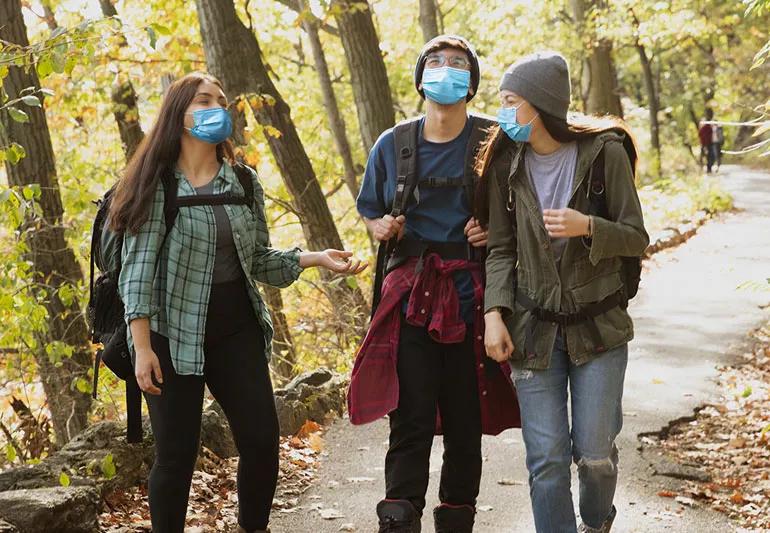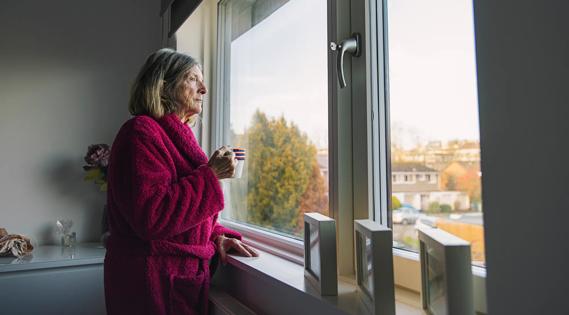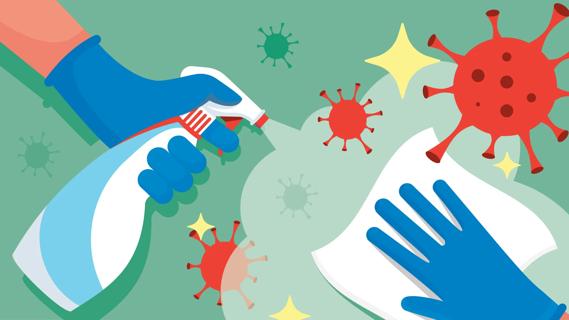Advertisement
Safe, cold-weather entertaining during coronavirus

As the temperature starts to dip and most of the country moves into colder months, many are wondering about the safety of hosting outdoor gatherings during the pandemic. Surely you’ve seen your neighbor hosting a draft party in his garage. Or maybe you’ve been invited to a friend’s house for a backyard bonfire.
Advertisement
Cleveland Clinic is a non-profit academic medical center. Advertising on our site helps support our mission. We do not endorse non-Cleveland Clinic products or services. Policy
But how safe are these outdoor get-togethers? And is it worth the freezing cold?
According to emergency medicine physician Baruch Fertel, MD, it’s important to first acknowledge what we know about the transmission of COVID-19:
When you’re debating whether or not you should attend any event during the pandemic, these truths should be top of mind to help you determine the risk level.
Here Dr. Fertel explains the science behind outdoor vs. indoor activity and what to keep in mind if you gather outside.
Yes, you can absolutely still catch the virus outside.
“There have been plenty of examples of large, outdoor gatherings becoming superspreader events,” explains Dr. Fertel. “Just because you’re outside does not mean there isn’t any risk. The best protection really comes down to ventilation, physical distance and wearing a face mask.”
A good example to demonstrate how the virus spreads is to imagine everyone around you smoking. To prevent other people’s smoke from going into your face (because no one wants that), you’d spread out and back away from the smokers. This could be done easily if you were outside and you’d notice the smoke quickly disappearing. But if you were inside and everyone around you was smoking, it would be difficult to get away since the smoke would linger and there’d be less room to spread out.
Advertisement
So merely being outside is not a guarantee that you won’t get the virus, but we do know that it’s better to be outdoors than indoors.
If you absolutely cannot bear one more virtual hangout and you live in an area where it gets cold, rest assured there are ways to gather outside and still be safe (and warm). However, you’ll need to take the proper precautions and make sure that the small group of people you’re interacting with will comply. (Again, just because you’re outdoors does not mean you can’t catch the virus!)
“If you’ve decided that it’s worth it to be a little uncomfortable in the cold, and you’re willing to do things safely, I think it’s reasonable to host or attend a small, outdoor get-together,” says Dr. Fertel.
If you live in an area where it might rain or snow, you’ll likely want some sort of shelter to keep you dry and some sort of heat source to keep you warm. Many people have decided to turn their garages into gathering areas or have invested in some sort of tent.
Dr. Fertel says a makeshift garage hangout is an OK idea, as long as the garage door is completely open and there is good ventilation. If you can, open any other windows or doors in the garage to allow for more airflow. And remember, your gathering should be small so you’re not too close together once you’re in the garage.
Things can get tricky with gathering in tents. If all of the sides are up or if you use a canopy, that is most optimal because of the airflow. However, unless the tent or canopy is fairly big, you’ll have a hard time maintaining six feet of physical distance between other people. If there’s little or no airflow in the tent, it’s no better than gathering indoors.
Hypothermia can occur in as little as 10 or 15 minutes in extremely cold temperatures. Babies, young children and older adults are most at-risk, so consider your group’s age and health when determining if an outdoor gathering is safe.
“Many people think if they’re cold and uncomfortable then they are safe from COVID-19, which couldn’t be further from the truth,” says Dr. Fertel.
Having an outdoor heat source will make everyone more comfortable, but it’s important to make sure that guests aren’t huddled too close together to get to the warmth. Whatever heat source you use, it really comes down to space, set up and safety.
A portable fire pit might be a good option if you’re OK with tending to a fire, but you’ll want to make sure that guests aren’t breathing in smoke and that no one gets burned. You could also choose to provide your guests with air-activated, disposable hand warmers to keep and take home.
Advertisement
Outdoor heating lamps, heated patio furniture, heated blankets and portable heaters all might be good options, but be aware of extension cords, flammable objects, burns and overloading electrical sockets. It’s worth noting that electric space heaters cannot cause carbon monoxide poisoning, but fuel-burning space heaters can and should only be used in well-ventilated areas.
And don’t forget, in many areas it now gets darker much earlier. Make sure there’s plenty of light in your outdoor space so guests don’t trip and fall. Hang string lights or place solar or battery operated lights around the area.
Here’s what else to keep in mind if you’re gathering in the cold:
Advertisement
Advertisement
Learn more about our editorial process.
Advertisement

Studies have shown promising results, but additional research is needed

Infection and inflammation can cause you to lose your voice and have other voice changes until you’re fully healed

A COVID-19 infection can bring on depression or anxiety months after physical symptoms go away

Just like the flu, COVID-19 continues to evolve every year with new and smarter variants

The latest omicron subvariants carry specific mutations that may allow the SARS-CoV-2 virus to be better at evading immune protection

You can work out with mild COVID-19, but not in a gym, and listen to your body and don’t overdo it

Most people can return to work and regular life when they’re symptom-free for 24 hours

Lysol Disinfecting Wipes are just one of more than 500 products approved by the EPA for protection against the SARS-CoV-2 virus that causes COVID-19

If you’re feeling short of breath, sleep can be tough — propping yourself up or sleeping on your side may help

If you fear the unknown or find yourself needing reassurance often, you may identify with this attachment style

If you’re looking to boost your gut health, it’s better to get fiber from whole foods